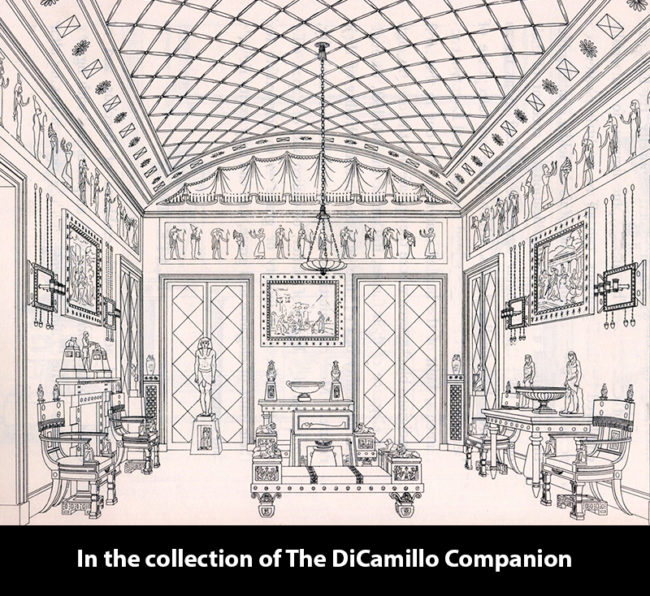
The drawing room from "Household Furniture and Interior Decoration"
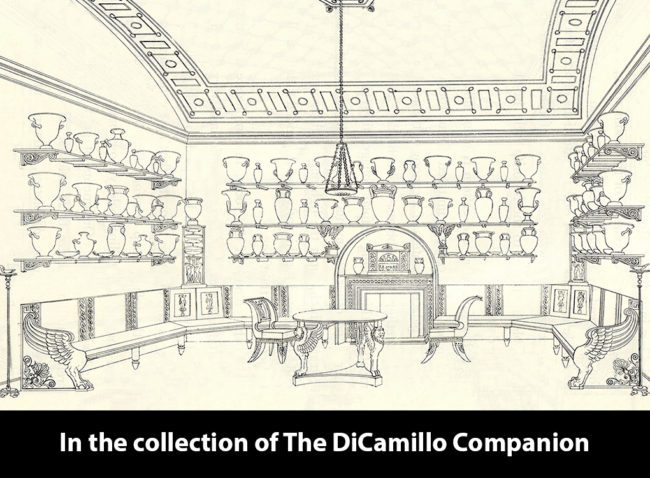
The Third Greek Vase Room from "Household Furniture and Interior Decoration"
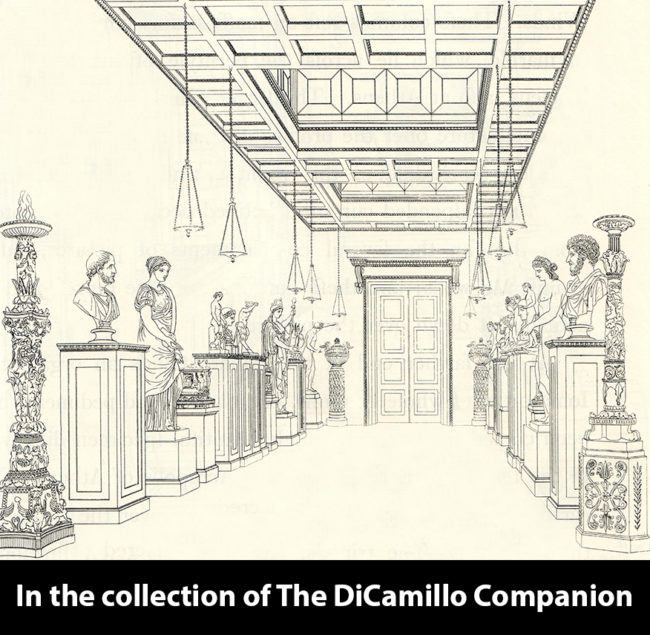
The statue gallery from "Household Furniture and Interior Decoration"
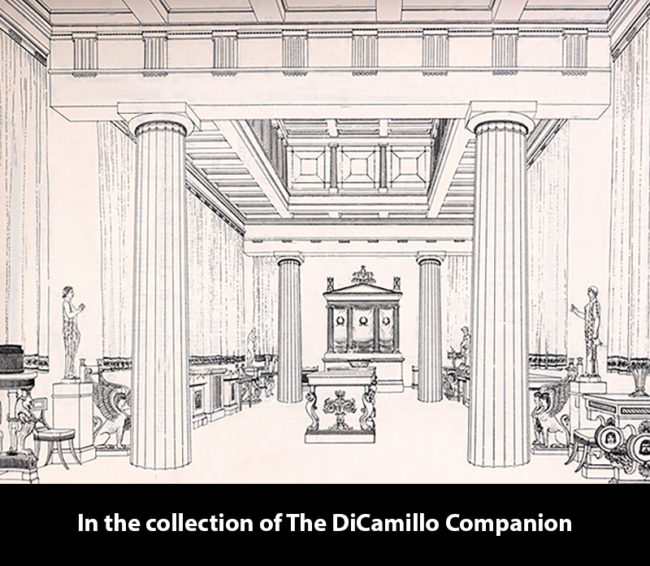
The picture gallery from "Household Furniture and Interior Decoration"

A modern, modified image of a mid-19th century watercolor of the Flemish Picture Gallery. The original is today in the collection of The Metropolitan Museum of Art.
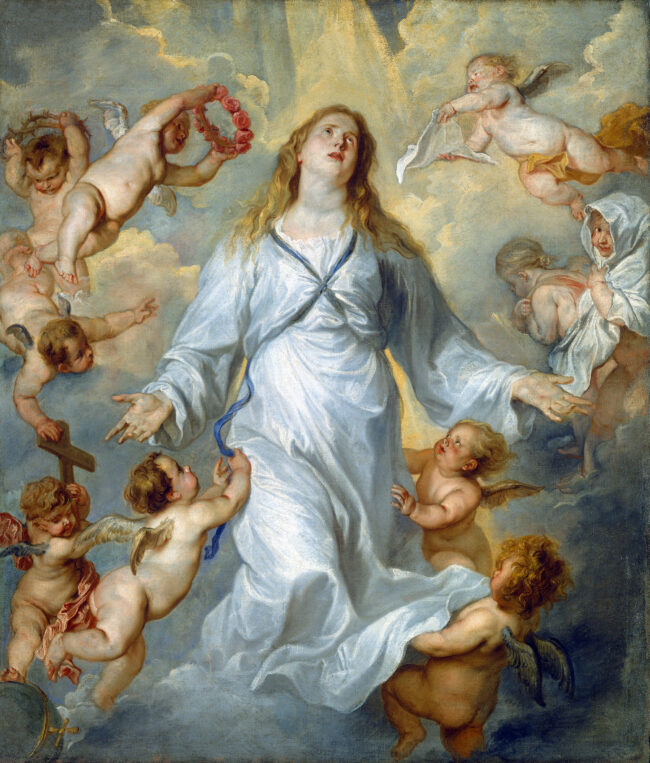
"The Virgin as Intercessor," Anthony van Dyck, 1628-29, formerly in the collection of Hope House, today in the Widener Collection, National Gallery of Art, Washington. This image is in the public domain.
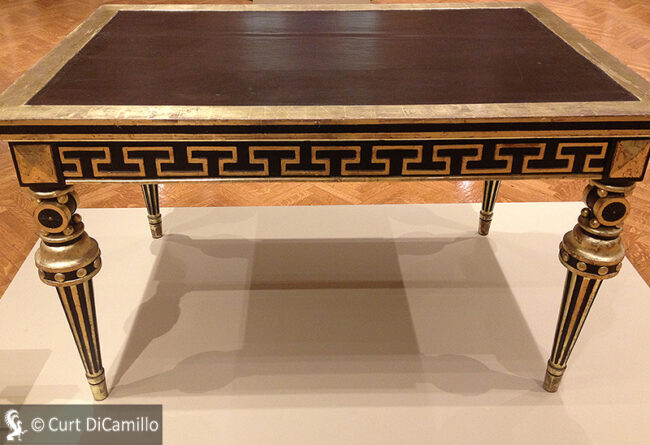
A library table designed by Thomas Hope. The circa 1800 table was in the picture gallery of Hope House. This table, today in the collection of the Minneapolis Institute of Art, appears in Hope's famous 1807 publication, "Household Furniture and Interior Decoration."

The 1807 title page from "Household Furniture and Interior Decoration"
Built / Designed For: General Robert Clerk
House & Family History: Thomas Hope purchased Duchess House in 1799. Renaming it Hope House, he used it primarily as a home for his large collection of art. Almost immediately he began adding to the house, primarily spaces to display his art. These additions included the Flemish Picture Gallery (see "Images" section), which displayed Dutch and Flemish paintings, the Flaxman Room, and three rooms for the display of Greek vases. The Flaxman Room contained sculpture by John Flaxman, one of Hope's favorite artists, including "Cephalus and Aurora." The latter is today in the collection of the Lady Lever Art Gallery, near Liverpool, which has a number of pieces formerly in Hope's collections at Hope House and his country house, The Deepdene. All of the new rooms at Hope House were open to the public on a regular basis. The Duchess Street house also featured an impressive picture gallery (see "Images" section) that sported four Greek Doric columns, possibly the first use ever of such columns in a domestic British interior (much of the interiors of The Deepdene were furnished in the same style as the Duchess Street house). Hope wrote the book "Household Furniture and Interior Decoration" in 1807 and thus coined the phrase interior decoration. Through his houses, furniture design, and publications, Thomas Hope played an important role in popularizing the Neoclassical style in the 19th century. The Duchess Street house was sold circa 1850 by Henry Thomas Hope, Thomas Hope's son, and demolished in 1851. Thomas Hope also built an Egyptian style house at No. 10 Duchess Street in 1799, which still stands today. The Grade II-listed house was the inspiration for the Egyptian Hall that was erected in Piccadilly in 1812 and demolished in 1905.
Collections: A circa 1800 library table designed by Thomas Hope for Hope House is today in the collection of the Minneapolis Institute of Art (see "Images" section). "The Virgin as Intercessor" by Anthony van Dyck, 1628-29, formerly in the collection of Hope House, is today in the Widener Collection, National Gallery of Art, Washington (see "Images" section).
Architect: Charles Heathchote Tatham
Date: 1799-1804Architect: William Atkinson
Date: 1819-20
Title: Biographical Dictionary of British Architects, 1600-1840, A - HARDBACK
Author: Colvin, Howard
Year Published: 2008
Reference: pgs. 49, 82, 538
Publisher: New Haven: Yale University Press
ISBN: 9780300125085
Book Type: Hardback
House Listed: Demolished
Park Listed: Destroyed
Past Seat / Home of: General Robert Clerk, circa 1770-97; Elizabeth, Countess of Warwick (widow of General Clerk), until 1799. Thomas Hope, 1799-1831; Henry Thomas Hope, 1831-50.
Current Ownership Type: Demolished
Primary Current Ownership Use: Demolished
House Open to Public: No
Historic Houses Member: No